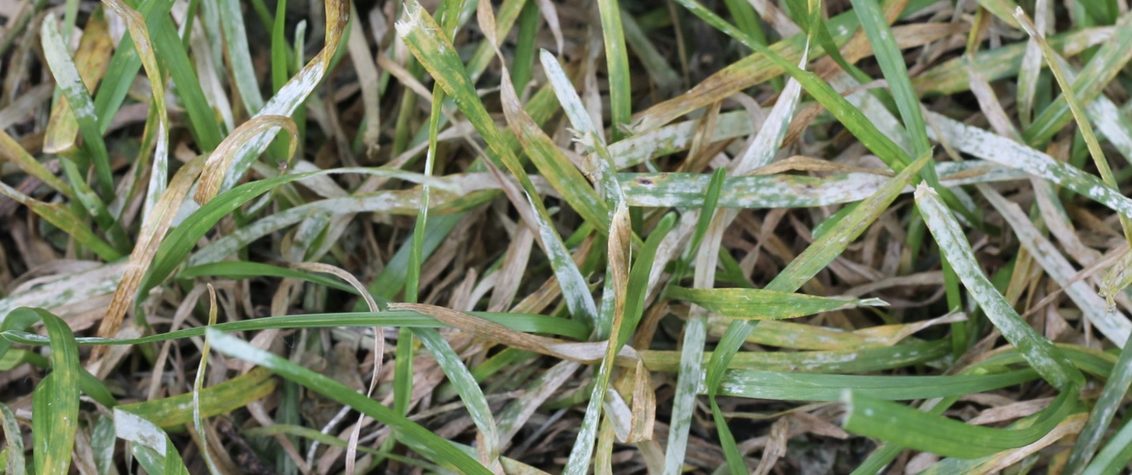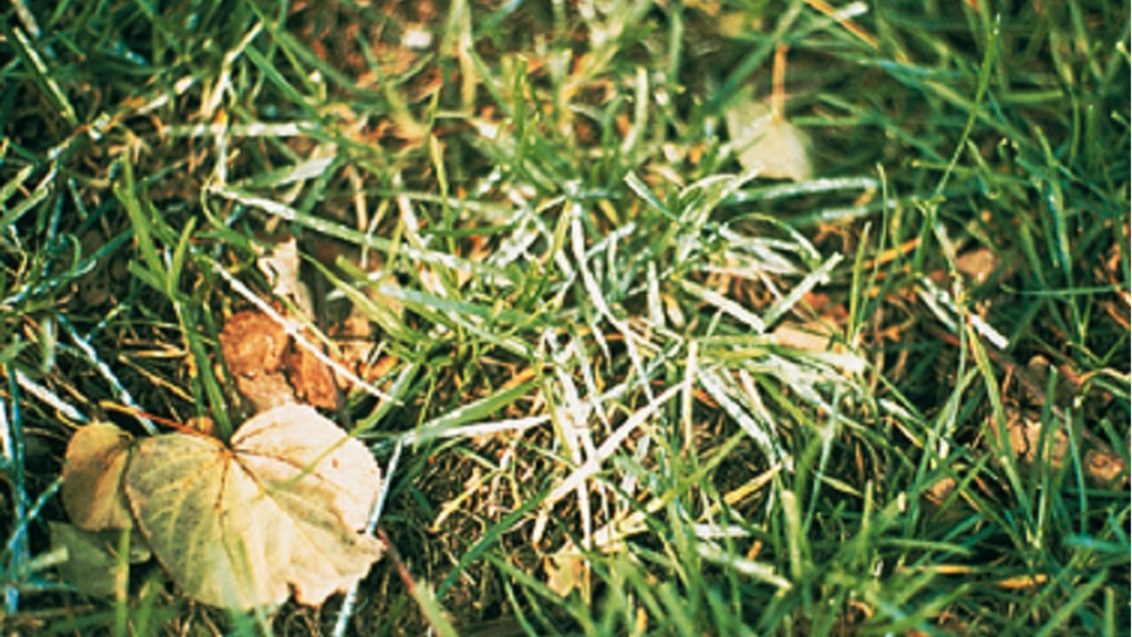Powdery Mildew
Turf Disease
Susceptible turfgrass: Kentucky bluegrass, fine-leaf fescue, bentgrass, ryegrass, and Bermuda grass.

Symptoms
-
The disease first appears on the leaves as individual tufts of fine, white mycelium.
-
The tufts enlarge and coalesce, causing the leaves to have a greyish-white or powdery appearance.
-
Severely infected turf initially turns yellow, then tan and brown in colour.
-
Infected, shaded turf can become thinned, severe infection can result in turf necrosis.
Conditions favouring disease
-
Powdery mildew is favoured by humid, cloudy weather with temperatures between 15°C and 22°C.
-
It occurs in areas under stress, with low light, and with high humidity.
-
Powdery mildew is also common in areas with poor air circulation, but does not require a film of water to infect turf.
Integrated turf management
• Water to alleviate drought stress.
• Avoid high levels of nitrogen and irrigation that produce lush leaf growth.
• Raise the mower height.
• Prune tree limbs to improve air circulation and the amount of sunlight.
• Convert to a polystand of shade-adapted turfgrass.
Fungicidal Control
Banner Maxx has a label recommendation for powdery mildew in South Africa.

